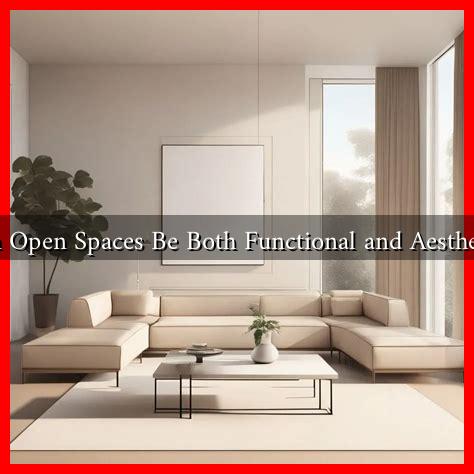-
Table of Contents
Can Open Spaces Be Both Functional and Aesthetic?
Open spaces are essential components of urban and rural environments, serving as vital areas for recreation, social interaction, and ecological balance. However, the question arises: can these spaces be both functional and aesthetically pleasing? This article explores the dual role of open spaces, examining their functionality, aesthetic value, and the successful integration of both elements in various contexts.
The Importance of Open Spaces
Open spaces, including parks, gardens, and plazas, play a crucial role in enhancing the quality of life in communities. They provide numerous benefits, such as:
- Recreational Opportunities: Open spaces offer areas for physical activities like jogging, cycling, and sports.
- Social Interaction: These spaces serve as gathering points for communities, fostering social ties and cultural exchange.
- Environmental Benefits: Green spaces contribute to biodiversity, improve air quality, and mitigate urban heat effects.
- Economic Value: Well-designed open spaces can increase property values and attract tourism.
Functionality in Open Spaces
Functionality in open spaces refers to their ability to serve practical purposes effectively. This includes providing adequate facilities, accessibility, and safety. Key aspects of functional open spaces include:
- Accessibility: Open spaces should be easily reachable for all community members, including those with disabilities.
- Facilities: Essential amenities such as restrooms, seating areas, and water fountains enhance usability.
- Safety: Well-lit and maintained areas reduce crime and encourage more people to use the space.
For example, New York City’s Central Park is a prime illustration of a functional open space. It offers a variety of recreational facilities, including playgrounds, sports fields, and walking paths, while also being accessible to millions of visitors each year.
Aesthetic Value of Open Spaces
Aesthetics in open spaces involve the visual appeal and design elements that create an inviting atmosphere. Aesthetic considerations can include:
- Landscaping: Thoughtful planting of trees, flowers, and shrubs enhances beauty and biodiversity.
- Art Installations: Sculptures and murals can add cultural significance and visual interest.
- Design Elements: Features like water bodies, pathways, and seating areas can create a harmonious environment.
One notable example is the High Line in New York City, a transformed elevated railway that features lush gardens, art installations, and stunning views of the city. This space is not only functional for walking and socializing but also serves as a beautiful urban landscape.
Integrating Functionality and Aesthetics
Achieving a balance between functionality and aesthetics in open spaces requires thoughtful planning and design. Here are some strategies to consider:
- Community Involvement: Engaging local residents in the design process ensures that the space meets their needs and reflects their culture.
- Multi-Use Design: Creating spaces that can serve multiple purposes—such as a park that hosts events, sports, and quiet areas—maximizes functionality.
- Sustainable Practices: Incorporating native plants and sustainable materials can enhance both the ecological function and aesthetic appeal of open spaces.
Case studies like the Millennium Park in Chicago demonstrate how integrating art, architecture, and nature can create a multifunctional and visually stunning environment. The park features concert venues, gardens, and public art, attracting millions of visitors annually.
Conclusion
Open spaces can indeed be both functional and aesthetic, serving as vital components of urban and rural landscapes. By prioritizing accessibility, safety, and community involvement, planners and designers can create spaces that meet practical needs while also providing beauty and inspiration. The successful integration of these elements not only enhances the quality of life for residents but also contributes to the overall health and vitality of communities. As cities continue to grow, the importance of well-designed open spaces will only increase, making it essential to find the right balance between functionality and aesthetics.
For further reading on the importance of open spaces in urban planning, visit Urban Land Institute.


